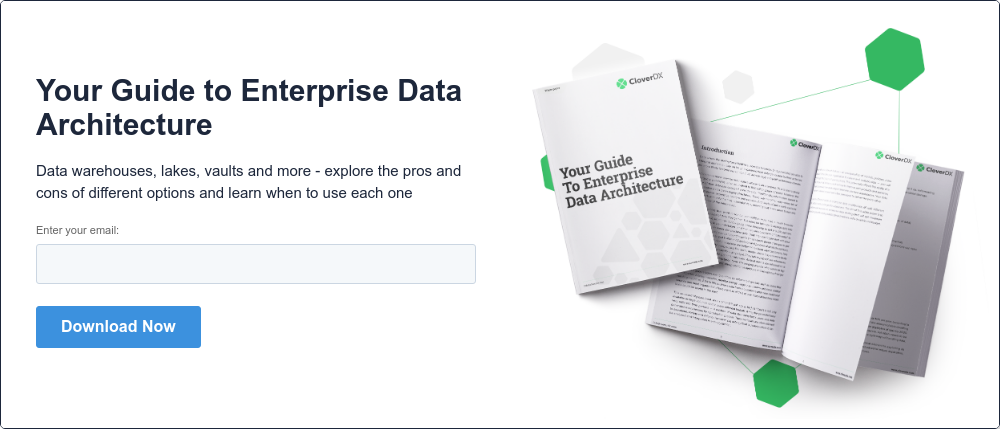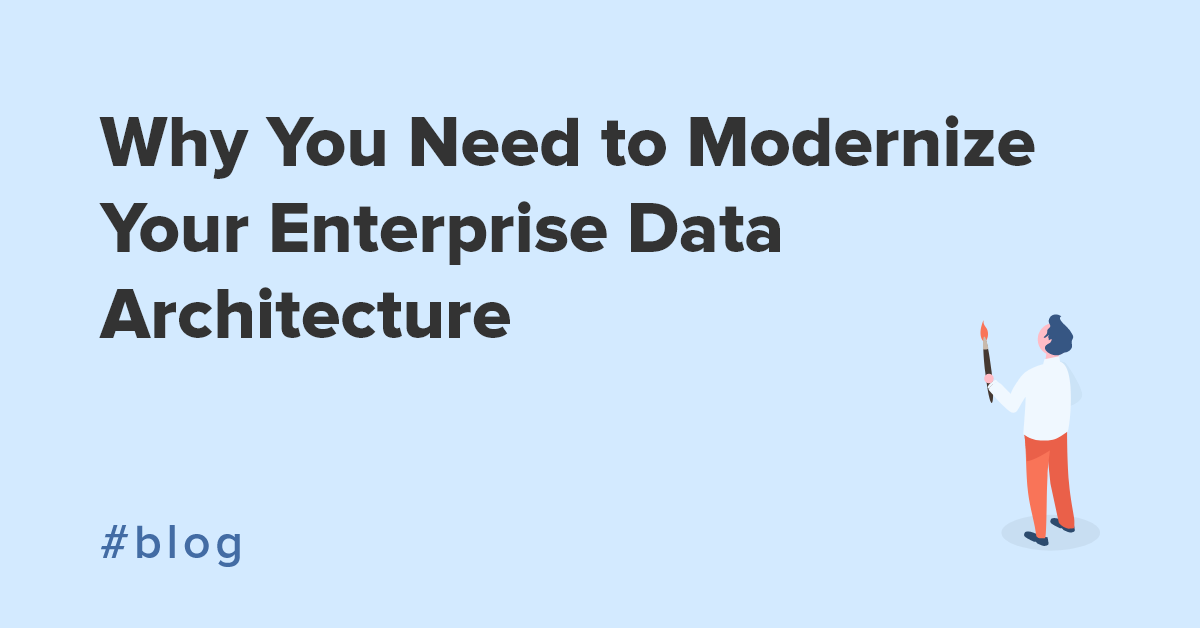Eighty one percent of organizations are prioritizing the integration ofmodern technologies, such as advanced analytics. But if they’re going to deliver on these initiatives, they need a modern data architecture to build upon.
Unfortunately, many organizations struggle to achieve this because of inflexible and outdated data architectures.
Not only that, as the amount of business data increases, a modern data architecture is essential to your current pipelines, as well as any you plan to build in the future.
A modern data architecture enables you to stay on top of your data, even as it grows. It also enables you to break down your data silos and unlock the true value of your data for the entire business.
Still need convincing ?
Let’s dig a little deeper and uncover three key reasons why you need to modernize your enterprise data architecture.
Reason 1: You need to keep pace with the increasing scale of data
Handling large amounts of business data requires writing lots of code to operate all your databases, data warehouses and data lakes. At this scale (and with the data arriving at near real-time velocity), managing data pipelines requires a robust and modern architecture.

Historically, you may only have had a few core systems creating data. But this can easily balloon thanks to numerous SaaS applications, as well as the increase in overall data you’re capturing. To handle all your digital processes and make them smarter, you need to effectively manage the scale of data. And to do this, you need a better architecture.
Without modernizing your architecture, you’ll fail to manage the sheer amount of data. (Are you hoarding data or just using what you need?) What’s more, you’ll struggle to make the changes you need to stay competitive.
Guide to Enterprise Data ArchitectureReason 2: You need to eliminate the data silos sabotaging business growth
Data silos are the scourge of every IT department. When data sits in the dark, not only is its value lost, but the storage costs alone will damage your profitability. And, if you happen to have duplicated datasets, this wasted spend only increases. There’s also lost productivity from the confusion caused by duplicates - for example, when two people from the same organization can’t even define who is 'a customer’
Also, without the right architecture, your pipelines will likely exclude the people who get the most value from your data. For example, if datasets regarding employee performance are available to department heads but not line managers, you’ll disempower team leaders and hinder employee development.
The answer is a well thought out, modern enterprise data architecture that keeps your data flowing to the right applications and functions.
Reason 3: You need to boost data value and deliver business insights
Often, actionable business insights are where ‘the rubber meets the road’; it’s where the core purpose of your data comes to life. Part of this is identifying current and future customer expectations to provide a more competitive product.
However, if you have an outdated or poorly executed data architecture, you’ll struggle to discover actionable insights and deliver innovative new products. Perhaps your data isn’t clean enough to be useful, or the time to value of executing on data processes is just too long.
To remedy this and boost your data value, consider:
- Automating data entry where possible to give back time to team members and make it easier for multidisciplinary teams to solve the same business problems.
- Measuring (and improving) the quality of the data you're working with. Low quality data is going to produce low quality insights that will damage your business. ‘Garbage in = garbage out’.
- Assessing the latency of business processes and the time to value of new data models. For example, we helped one banking customer dramatically improve their agility by modernizing their data architecture with an innovative data model bridge.
A modern data architecture solves modern issues
Without a modern data architecture, you’ll struggle to handle increasing amounts, formats and sources of data. Persistent data silos also mean that useful data sits untouched, and ultimately, you fail to adapt to emerging customer demands.
But more than this, an ineffective data architecture is not future-proof.
Analytics, big data, edge computing – these are all important shifts in the IT landscape that should be on every business analyst’s radar. After all, if you can’t unlock the value of the data you’re currently managing, how will you integrate new technologies?
That said, we understand your challenges – the modern IT department has many plates to spin. To take the weight off strategic route to success, we’ve put together a comprehensive guide to help you examine all the different data architecture options and make the right choice for your business.
Click below to access your guide and take the next step to modernizing your enterprise data architecture.
By CloverDX
CloverDX is a comprehensive data integration platform that enables organizations to build robust, engineering-led, ETL pipelines, automate data workflows, and manage enterprise data operations.








